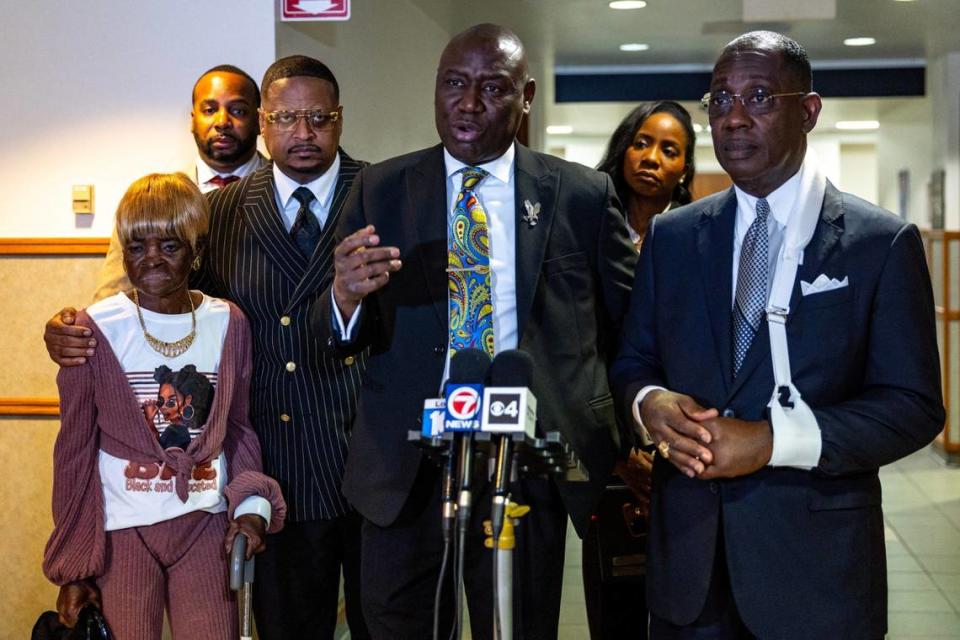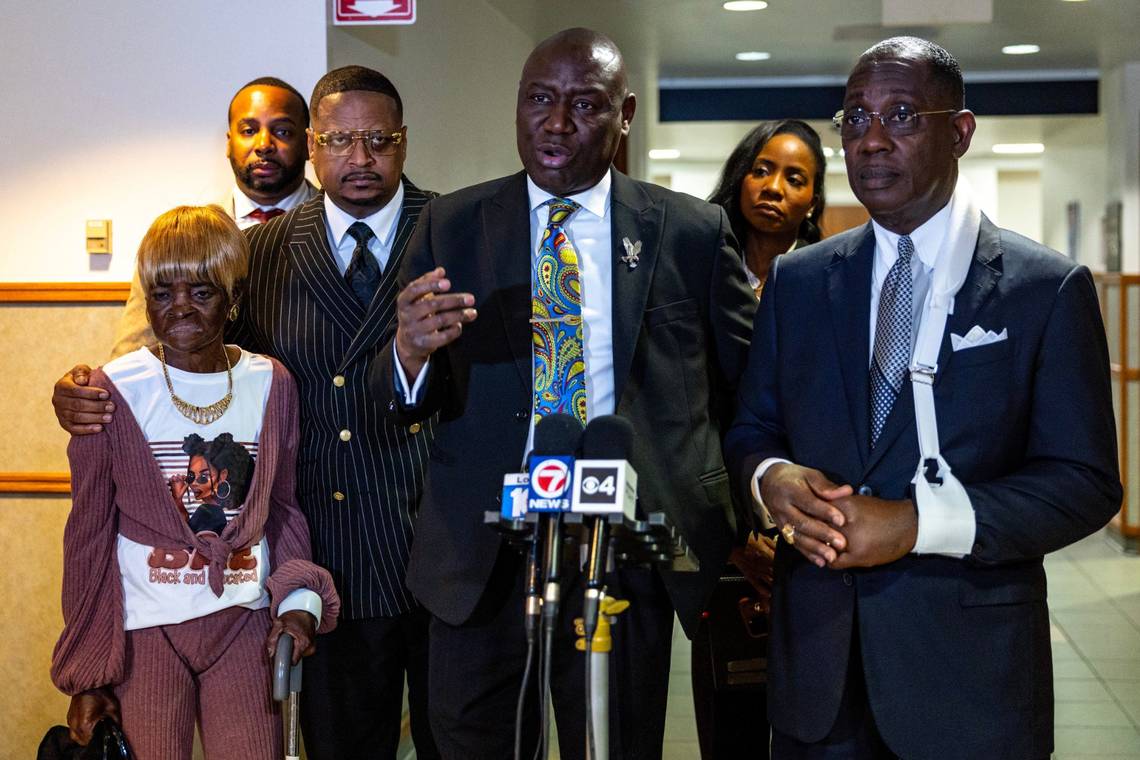He then demanded that the Miami-Dade State Attorney’s Office drop all charges against his client and said the family was considering all legal options.
“The whole world is watching, Miami,” Crump said before a bank of television cameras. “Do the right thing for Daniel Armstrong.”

Last month, cellphone footage that has since catapulted through social media, captured the harrowing moments that led up to a Miami Police officer shooting a man suffering a mental breakdown, six times.
Video shows Miami police shooting man repeatedly. He’s in critical condition, police say
The incident began, according to police and family members, when Armstrong’s mother called police to say her son was suffering a mental health crisis and that she needed help. The situation escalated once police arrived.
Armstrong, 47, stood on the front porch of his Model City home, near Liberty City, clearly agitated as a half dozen or more Miami Police officers faced him down from the front lawn, their weapons drawn. Twice, officers fired the electronic prong of a Taser into Armstrong.
Armstrong seemed to be falling face-down off the front of the porch when Miami Police Officer Kassandra Mercado opened fire. She struck him six times, according to Armstrong’s attorneys Crump and Larry Handfield — five times after he was on the ground. Crump said she fired nine times.
The object Armstrong was holding, which appeared to be some type of stick, was left on the porch. No other officers fired their weapon.
Armstrong was taken to the hospital. His wounds weren’t life-threatening. Handfield said he’s still suffering from some type of paralysis.
Armstrong was charged with aggravated assault on a law enforcement officer and resisting arrest without violence. In recent days, he’s been transferred from the hospital to a medical wing at the Turner Guilford Knight Correctional Center, his attorneys said.
The video stirred emotions in a community that has suffered its share of questionable shootings of Black men by police over the years. In one stretch more than a decade ago, Miami Police shot seven mostly young Black men in a seven-month period. The unusual amount of use-of-force attracted the attention of the civil rights arm of the U.S. Department of Justice. The city eventually agreed to and followed the directions of a consent decree that called for policy changes and a change in training techniques.
Armstrong’s shooting caught the attention of local activists who called it a “grave injustice.” Leaders of The Healing and Justice Center, composed of four groups including the Circle of Brotherhood and the Dream Defenders, explained how Armstrong’s situation would likely have ended much differently had their Freedom House Mobile Crisis Unit been called instead of or to ride along with police. The unit is composed of mental health professionals who are expert at de-escalation tactics.
Outside the courtroom Tuesday, Handfield said he was dismayed charges against Armstrong hadn’t been dropped and that he remains jailed with no bond yet set, perhaps until his arraignment Thursday.
“It’s utterly ridiculous. Thank God there’s video,” said Handfield.
Crump wondered aloud about the disparity in the way Blacks are treated by police.
“How do people in the Black community trust we get equal justice, when you look at this video?” he asked.
And Armstrong’s mom, older and a bit unsteady, but still able to speak clearly, said she just wanted her son home.
“I need y’all to pray for him, please,” she said.
